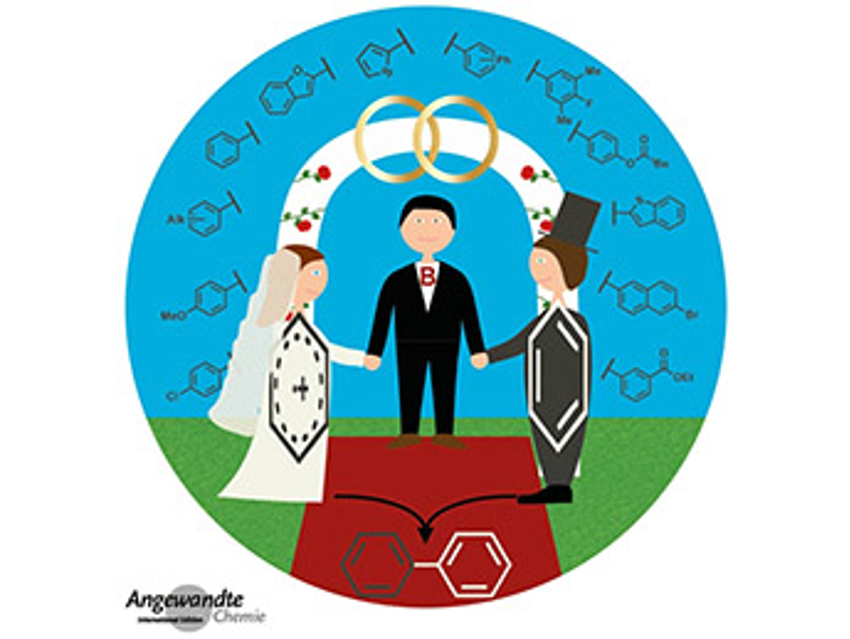In this issue, M. Vázquez-González and I. Willner review stimuli-responsive biomolecule-based hydrogels. Further reviews discuss surface capping agents in the shape-controlled synthesis of colloidal metal nanocrystals (Y. Xia et al.), plastic recycling (B. M. Weckhuysen et al.), nanoarchitectonics to create bio-like hierarchic organization (J. Li e tal.), and targeted protein degradation (P. M. Cromm et al.).
The Minireviews deal with electrocatalysis for sustainable energy (W. Schuhmann et al.), mechanisms of perovskites and pyrochlores as electrocatalysts revealed by X-ray absorption (J. Park, J. Cho), and soft porous crystals’ structure dynamics and gas adsoption properties (S. Kitagawa et al.). X. Bao et al. share a Viewpoint regarding carbon encapsulation of metal catalysts a.k.a. chain mail.
In the Original Research section, C. Gerleve and A. Studer describe transition-metal-free oxidative cross-couplings of tetraarylborates to biaryls with organic oxidants (see picture). F. H. Arnold et al. succeeded in the selective enzymatic oxidation of silanes to silanols. H. Grützmacher et al. present the hydrogenolysis of polysilanes catalyzed by low-valent nickel complexes, and W. E. Moerner et al. investigated nanomaterials by means of cryogenic correlative single-particle photoluminescence spectroscopy and electron tomography. J. W. Szostak et al. achieved template-directed copying of RNA by non-enzymatic ligation.
- Angewandte Chemie 36/2020: Well Protected,
Angew. Chem. Int. Ed. 2020, 59 (36).


